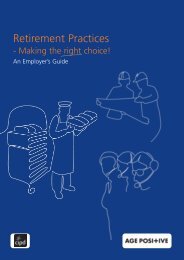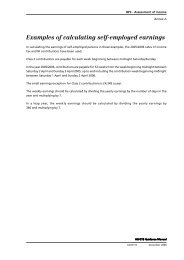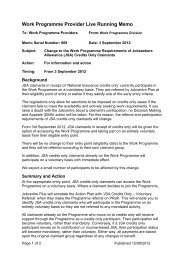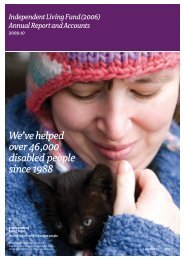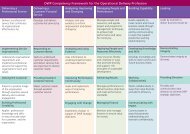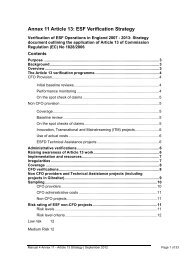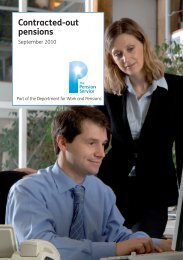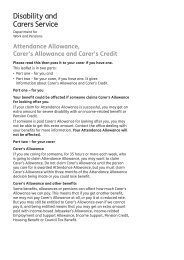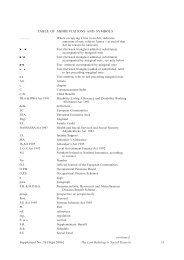Arthritis, rheumatism, musculo-skeletal and rheumatological disorders
Arthritis, rheumatism, musculo-skeletal and rheumatological disorders
Arthritis, rheumatism, musculo-skeletal and rheumatological disorders
Create successful ePaper yourself
Turn your PDF publications into a flip-book with our unique Google optimized e-Paper software.
(iv) Due to disuse atrophy (i.e. wasting of muscles) because of painful lower<br />
limb joints, falls can be a problem, generally in the older person.<br />
(v) In ankylosing spondylitis, because of back stiffness, assistance may be<br />
needed with lower garments when dressing <strong>and</strong> in getting in <strong>and</strong> out of the<br />
bath.<br />
6.4.8 Mobility Considerations<br />
(i) Walking may well be impaired in those with active inflammation of joints in<br />
lower limbs. When the feet are affected, this may cause severe pain on<br />
walking. If knees <strong>and</strong> hips are involved, st<strong>and</strong>ing <strong>and</strong> sitting can be difficult<br />
<strong>and</strong> painful, <strong>and</strong> walking more severely limited.<br />
6.4.9 Duration of Needs<br />
(i) The needs of persons with highly active joint inflammation may lessen<br />
dramatically when spontaneous remissions occur or in response to drugs.<br />
These drug treatments are associated with an improvement in the extent <strong>and</strong><br />
severity of arthritis. When this occurs it will be likely to do so within about one<br />
year's treatment. Patients are most responsive to treatment in the initial stages<br />
of rheumatoid arthritis (i.e. 2 to 5 years following onset).<br />
(ii) There will be older patients with a longst<strong>and</strong>ing history of rheumatoid<br />
arthritis in whom the disease may be "burnt-out", leaving many of the smaller<br />
joints of the h<strong>and</strong>s deformed with poor h<strong>and</strong> function or resulting in fixed<br />
deformities of lower limb joints with impairment of walking ability. In these<br />
people the needs will depend upon the overall disablement in the individual<br />
case but are unlikely to change throughout the remainder of the person's life.<br />
(iii) In the majority of people with rheumatoid arthritis, the disease smoulders<br />
on, involving further joints, <strong>and</strong> slowly increasing levels of disability <strong>and</strong><br />
associated needs.<br />
6.5 Osteoporosis<br />
6.5.1 Osteoporosis is the name given to a reduction or thinning in the total mass<br />
of bone present in the body. The precise mechanism causing this disease is<br />
unclear. It is found most frequently in women after the menopause, particularly in<br />
the older woman; <strong>and</strong> in people receiving long-term treatment with steroid<br />
compounds, e.g., for rheumatoid arthritis. Sometimes the condition is noted in<br />
younger women who have had their ovaries removed (oophorectomy).<br />
Inadequate physical activity promotes generalised osteoporosis <strong>and</strong> the condition<br />
also occurs in various gl<strong>and</strong>ular <strong>disorders</strong> <strong>and</strong> in cases of severe malnutrition<br />
<strong>and</strong> chronic renal (kidney) disease.<br />
6.5.2 The condition is of variable severity. In its mild form it may give rise to no<br />
symptoms <strong>and</strong> may be a chance X-ray finding. When the condition is more<br />
severe, pain may be a feature. This is usually due to fractures of the "brittle"<br />
bones, often occurring after only minor injury. Persistent backache may occur<br />
later on in the disease, due to progressive compression or collapse of several




